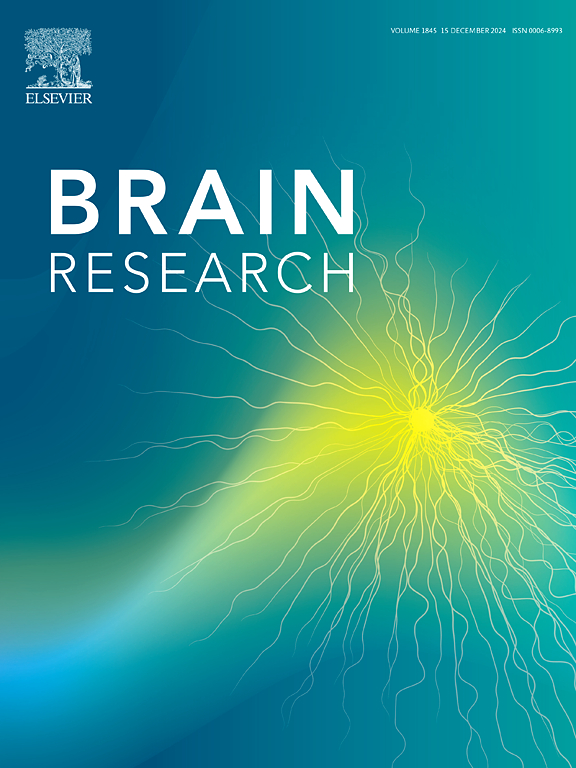Menopause triggers microglia-associated neuroinflammation in Parkinson’s disease
IF 2.7
4区 医学
Q3 NEUROSCIENCES
引用次数: 0
Abstract
Microglia, the immune cells of brain, can drive neurodegenerative diseases like Parkinson’s disease (PD). The resting microglia can polarize into two extremes, either proinflammatory M1 or anti-inflammatory M2 phenotype under a specific microenvironment. Different transcriptional factors and the release of various cytokines characterize these states. The released proinflammatory markers from M1 microglia lead to neuroinflammation that ultimately causes irreversible loss of dopaminergic neurons in PD patients, on the contrary, the M2 microglia possess neuroprotective activity. PD is caused by aggregation and misfolding of α-synuclein in the affected dopaminergic neurons. The misfolded α-synuclein is cytotoxic and can propagate like a prion from one cell to the other, acting like a template, that can initiate the conversion of normal proteins into abnormal conformation. The extracellular α-synuclein can interact and polarize the microglia into the M1 phenotype resulting in inflammation, thereby driving the progression of PD. The progression of neuroinflammation-mediated neurodegeneration in PD is seen higher in menopausal women; likely due to the low circulating estrogen levels. Estrogen hormones possess neuroprotective activity, and one of the ways is that they can polarize the microglia into M2 phenotypes and reduce α-synuclein-mediated microglial activation. A detailed understanding of the signaling mechanisms underlying microglial polarization between M1 and M2 phenotypes is crucial for identifying druggable targets to reduce PD symptoms, including in menopausal women.

更年期引发帕金森病的小胶质细胞相关神经炎症
小胶质细胞是大脑的免疫细胞,可以驱动神经退行性疾病,如帕金森病(PD)。静息的小胶质细胞在特定微环境下可分化为促炎型M1或抗炎型M2两种极端表型。不同的转录因子和各种细胞因子的释放是这些状态的特征。M1小胶质细胞释放的促炎标志物导致神经炎症,最终导致PD患者多巴胺能神经元的不可逆损失,而M2小胶质细胞则具有神经保护活性。PD是由α-突触核蛋白在受影响的多巴胺能神经元中聚集和错误折叠引起的。错误折叠的α-突触核蛋白具有细胞毒性,可以像朊病毒一样从一个细胞传播到另一个细胞,像模板一样起作用,可以启动正常蛋白质向异常构象的转化。细胞外α-突触核蛋白可以相互作用,使小胶质细胞极化为M1表型,导致炎症,从而推动PD的进展。绝经期妇女PD中神经炎症介导的神经退行性变的进展更高;可能是因为循环雌激素水平过低。雌激素具有神经保护作用,其途径之一是使小胶质细胞极化为M2型,减少α-突触核蛋白介导的小胶质细胞活化。详细了解M1和M2表型之间小胶质细胞极化的信号机制对于确定减轻PD症状的药物靶点至关重要,包括绝经期妇女。
本文章由计算机程序翻译,如有差异,请以英文原文为准。
求助全文
约1分钟内获得全文
求助全文
来源期刊

Brain Research
医学-神经科学
CiteScore
5.90
自引率
3.40%
发文量
268
审稿时长
47 days
期刊介绍:
An international multidisciplinary journal devoted to fundamental research in the brain sciences.
Brain Research publishes papers reporting interdisciplinary investigations of nervous system structure and function that are of general interest to the international community of neuroscientists. As is evident from the journals name, its scope is broad, ranging from cellular and molecular studies through systems neuroscience, cognition and disease. Invited reviews are also published; suggestions for and inquiries about potential reviews are welcomed.
With the appearance of the final issue of the 2011 subscription, Vol. 67/1-2 (24 June 2011), Brain Research Reviews has ceased publication as a distinct journal separate from Brain Research. Review articles accepted for Brain Research are now published in that journal.
 求助内容:
求助内容: 应助结果提醒方式:
应助结果提醒方式:


